A blockage in a pipe, namely in a bathtub or sink, is a very unpleasant phenomenon that brings great discomfort. The drain is clogged, the throughput is reduced, and the water does not escape. In addition, a disgusting smell soon appears, the threat of flooding the premises or a pipe break.
To avoid this, it is important to eliminate the blockage in the early stages of appearance. As soon as you notice that the water has started to drain longer than usual, you can carry out the procedure. In this article, we will learn how to clear a blockage in a bathroom or kitchen at home.
Causes of blockages
The reason for blockages is that hair, small debris, animal hair, pellets and threads from clothes, soap residues and much more get into the pipe and drain. These components form a tight lump that impedes the passage of water. To unclog the pipe, you need to remove this debris. In this case, you can remove the blockage in the bathroom at home.
In old metal pipes, mineral build-up forms over time. In this case, the cleaning can only be carried out by an expert.
But this problem is rare and mostly in older houses where cast iron and steel pipes were used. The modern pipeline is made mainly of polypropylene, plastic and PVC, which is not susceptible to corrosion and the formation of deposits on the walls of products.
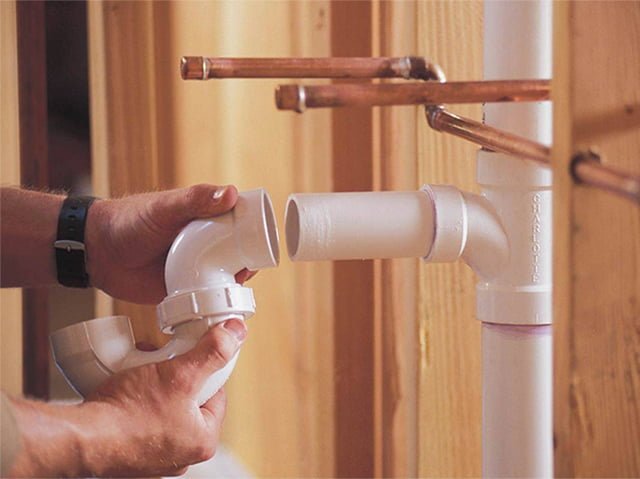
The reasons can also be improper sewerage installation and insufficient pipe slope, prolonged use of the pipeline and wear of devices. In this case, it is necessary to replace old pipes, wiring and risers, a siphon and other elements, or to eliminate defects made during the installation of the sewage system.
However, the most common cause of problems is the accumulation of debris in the pipes, which must be removed. Let's find out how to do it.
How to clear a blockage with a plunger or cable
Plumbing cleaning is the most common method used to remove blockages. The plunger exerts double pressure on the blockage, causing the debris inside the pipe to collapse. Close the overflow port, if present, tightly before the procedure.
Then press the rubber part of the plunger to the drain hole, press down on the device and start sharp, intense movements up and down. Make sure that the water in the sink or bathtub does not rise above the rubber valve during the process. Then pull off the plunger abruptly and repeat the procedure several times.
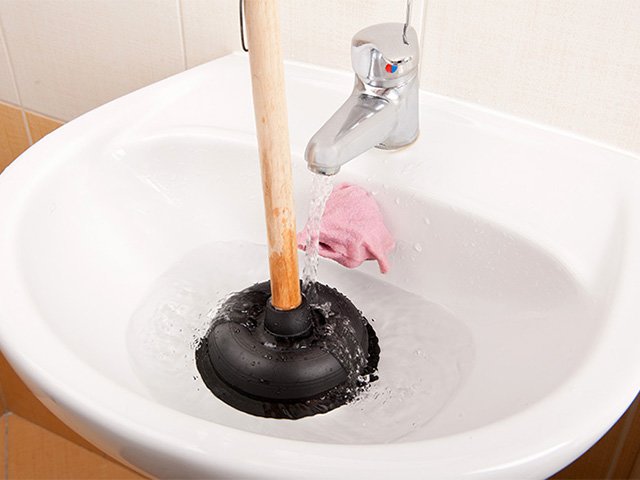
To ensure a more snug fit of the plunger to the drain, you can pre-lubricate the rim of the device with petroleum jelly. If it was not possible to completely remove dirt and debris, the drain is cleaned with a plunger and boiling water.
To do this, fill a third of the sink or bathtub with hot water. Then we insert the plunger and pump the pipe in the bathroom, pull it out sharply and repeat the procedure several times until the drain is completely clear.
Instead of a plunger, you can use a vacuum cleaner with a blowing function. The tube of the appliance is connected to the blow hole and the remaining end is wrapped with a cloth or soft material. This end is inserted into the drain hole and the vacuum cleaner is turned on.
Air pressure will push through or destroy the blockage. By the way, the function of blowing out air can also be used for outerwear after washing.
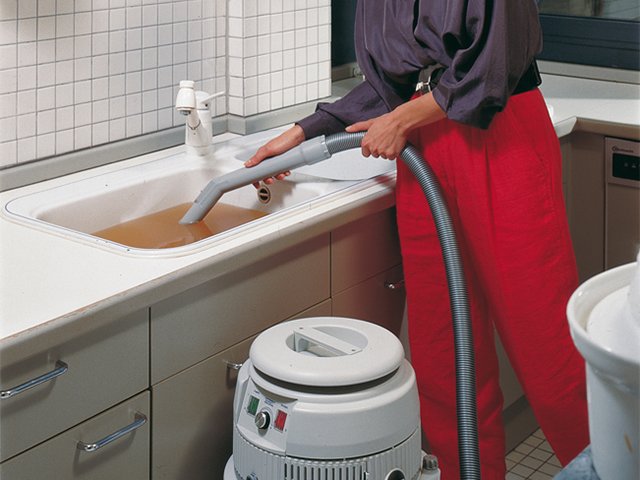
A severe, deep, and severe blockage will help clear the pipe sweeper. The procedure must be carried out carefully and carefully, otherwise the plastic pipes can be damaged. To clear a blockage in the bathroom with a cable, first remove the siphon.
Then take the device by the handle and point the other end into the pipe. Push the cable as deep as possible and begin to turn the cable clockwise.
When the cable reaches the gap, reinforce and speed up the rotation of the cable. He will push the debris further. After removing most of the blockages, pull out the product with the rest of the dirt. Rotate the cable clockwise only, otherwise it may break!
By the way, you can easily make a cable yourself. To do this, take a flexible metal wire, on one side of which wrap a cloth and make a handle. Bend the other end into a small hook.
Cleaning chemicals
Today, in stores and departments of household chemicals, you will find various products for cleaning pipes and blockages in the bathroom or sink. These are gels, powders, liquids and foams. Choose formulations that dissolve hair well and are suitable for your type of tubing.
By the way, many products are used not only for cleaning, but also for preventing blockages. We offer an overview of the most popular drugs.
- The mole is the cheapest and most affordable tool. It removes blockages and unpleasant odors effectively, but slowly; it lasts from 1.5 hours;
- Sanox is also an inexpensive drug that is suitable for every type of pipe. Delicately removes blockages and unpleasant odors, lasts from one hour. Has a child-proof cover;
- Chirton is a cheap remedy with a quick action of 15-20 minutes. Does not form dust and does not contain chlorine, but has a pungent odor. Available in gel and powder form;
- Tiret is a popular product for plastic and metal pipes, which is characterized by high cost and average efficiency. The action time is up to half an hour;
- Deboucher is an effective gel in a convenient package with a blocking lid, suitable for plastic and polypropylene. Due to the chlorine content, it cannot be used for aluminum pipes. Works within an hour;
- Flup is an aggressive granular agent with high efficiency without a pungent odor. Distinguished by easy and prompt cleaning of blockages;
- Bagi Pothan is an expensive but fast-acting granular product that works instantly in 3-5 minutes. It is characterized by high efficiency, economical consumption and convenient packaging. Not suitable for worn pipes and for preventing blockages.
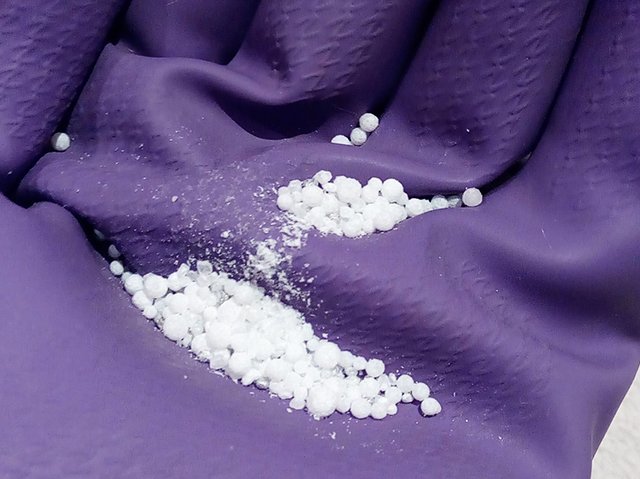
Most chemical compounds have a pungent odor and corrosive effect, therefore it is recommended to clean pipes using protective equipment. Be sure to wear gloves, if necessary, a respirator and eye protection. Carry out the cleaning procedure strictly according to the instructions and keep the product out of the reach of children.
Folk cleaning methods
- Light dirt is removed by lemon. To do this, take one piece of fruit and squeeze the lemon juice into the drain hole. After two hours, rinse the tub or sink with hot water;
- Fat and minor impurities in the pipes are removed with boiling water. Pour boiling water down the drain until the water starts to pass;
- Cleaning with soda and vinegar is effective and efficient. The two components react with each other to quickly eliminate difficult contaminants. First, a glass of soda is poured into the drain, and then a glass of vinegar is poured and the hole is plugged for 20-30 minutes. After that, the pipe is washed with boiling water;
- You can clear the blockage not only with baking soda and vinegar, but also with baking soda alone. Soda cleans and disinfects pipes by creating an alkaline environment. First, pour a liter of boiling water into the drain and clean it with a plunger after 15 minutes. Remove the dirt and pour a glass of soda into the hole, pour three more glasses of boiling water. Repeat the procedure if necessary;
- Using salt and baking soda is another way to clean up a blockage in your bathroom. To do this, pour half of both components into the hole, pour boiling water. Leave for 8 hours, periodically pouring in fresh boiling water. Then rinse the tub or sink with hot water.
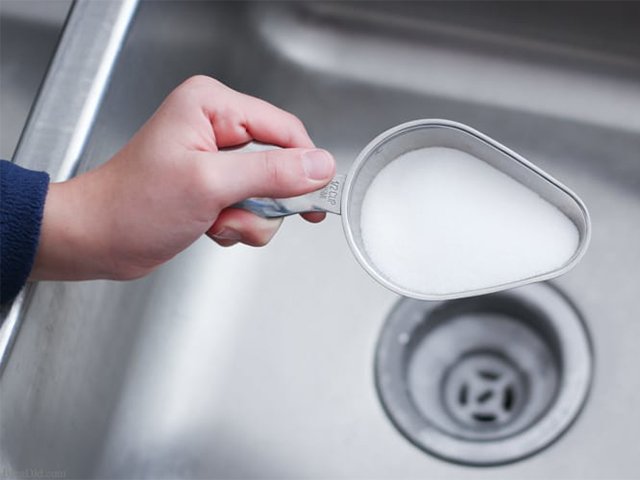
It is important to regularly remove hair from the drain. After each shampoo, be sure to collect and tidy up your hair. Use your plumbing properly to keep your bathtub or sink from getting clogged!
Do not clean vegetables in the kitchen sink, as the waste will easily clog the drain hole in a short time. Do not brush animals in the bathroom and do not rinse hair or threads into the drain hole. Do not wash your shoes directly in the bathroom, as dirt and sand will also clog the pipe.
To prevent blockages, it is sometimes recommended to pour boiling water into the drain hole, as it reliably removes soap and grease. Clean the siphon regularly. To do this, substitute a basin, bucket or other container under the pipe. Open the fasteners and remove the flask. Wait for the water to drain and gently clean the siphon with a soft cloth and water. Then put the device back.
